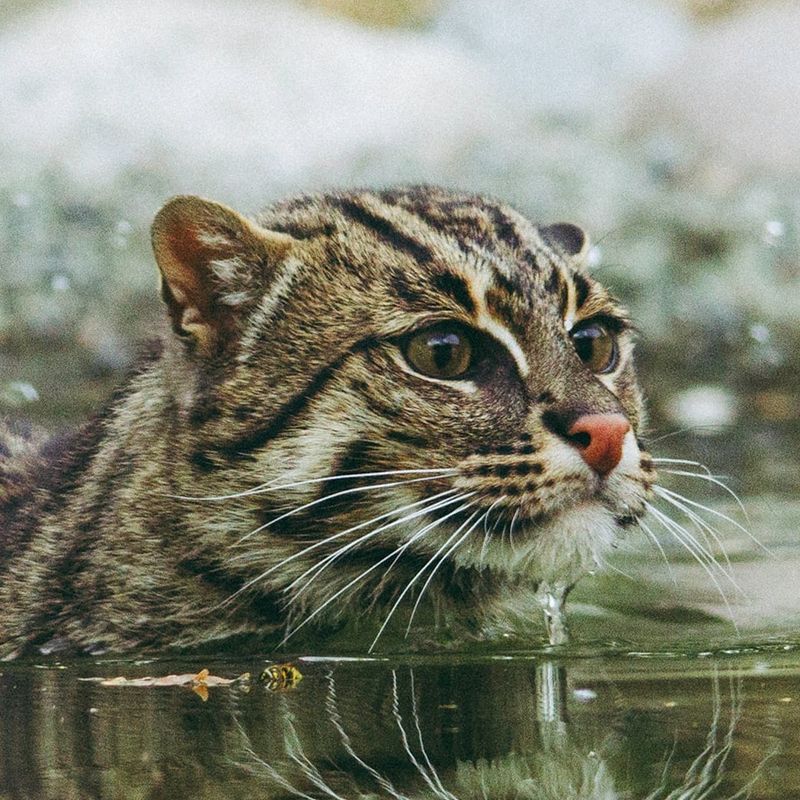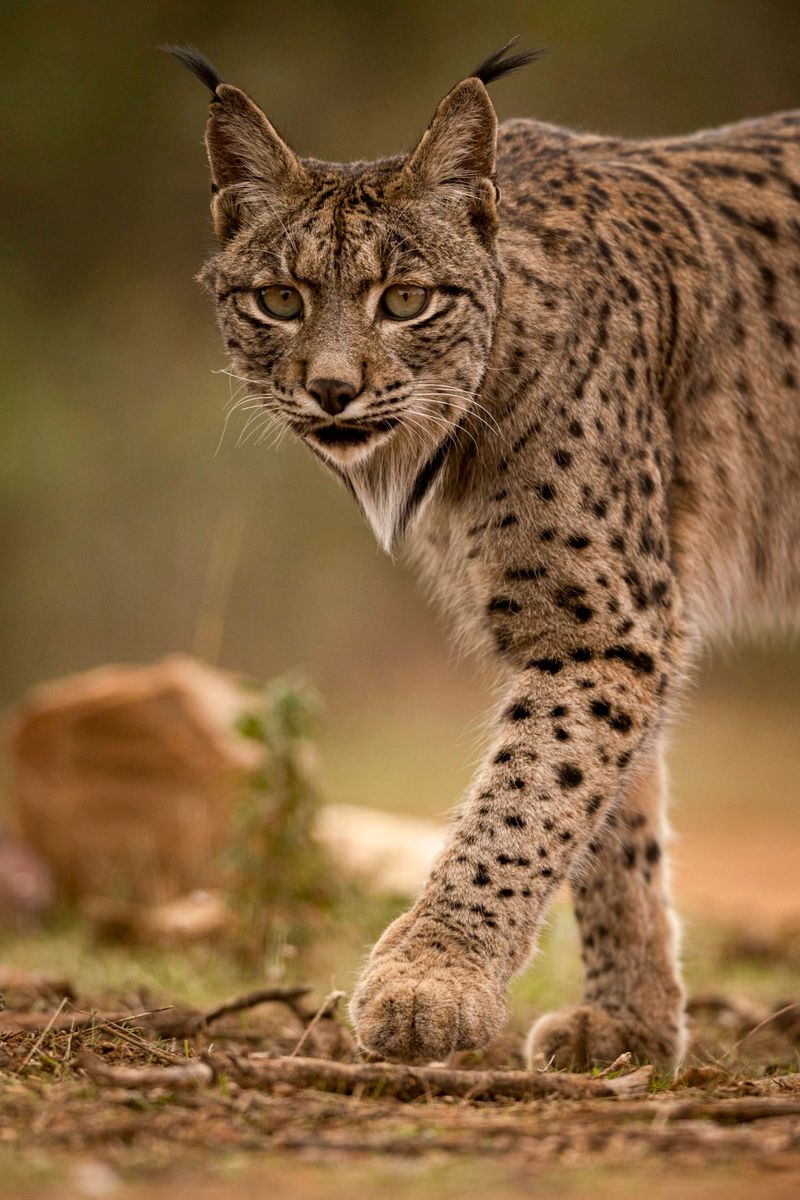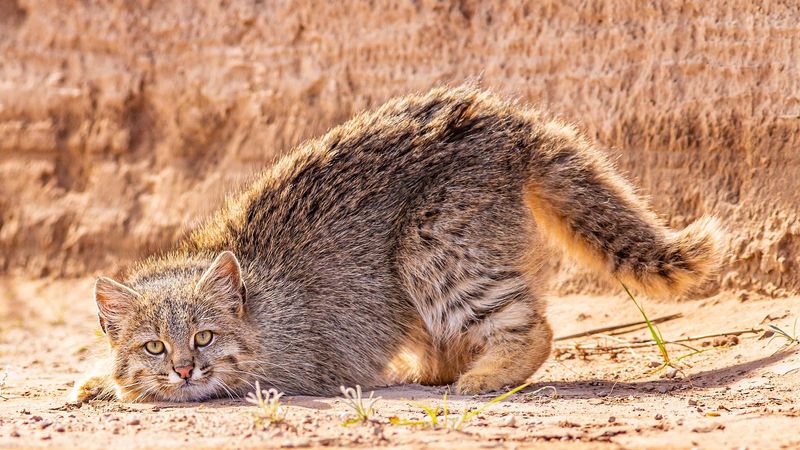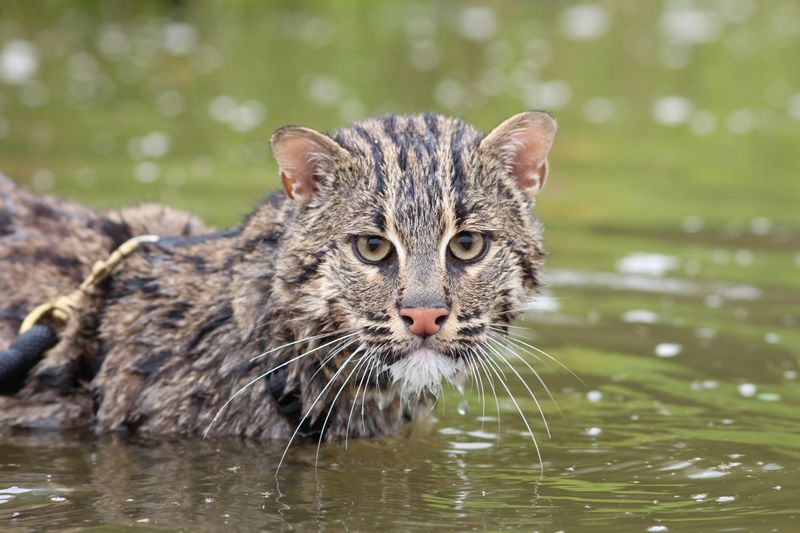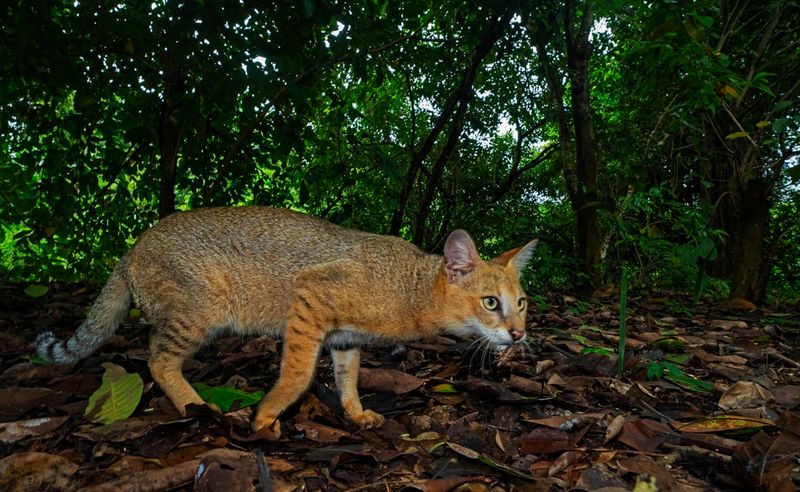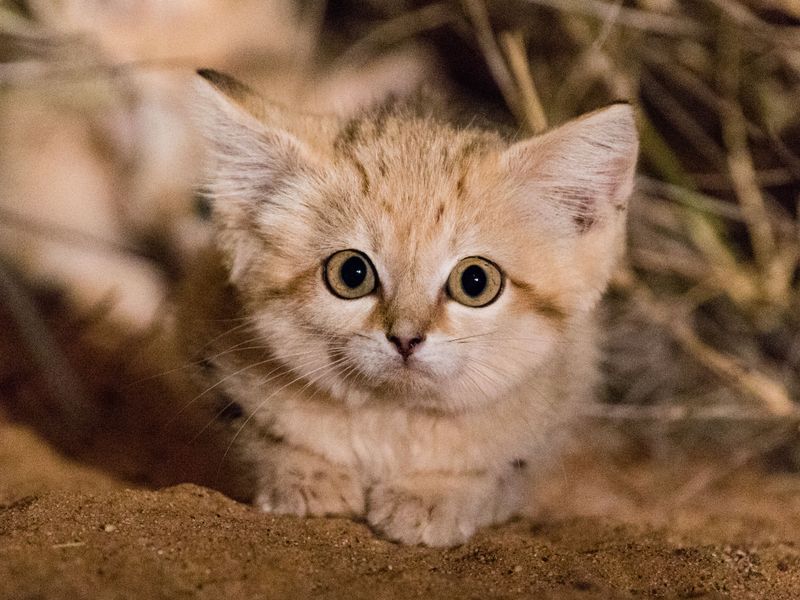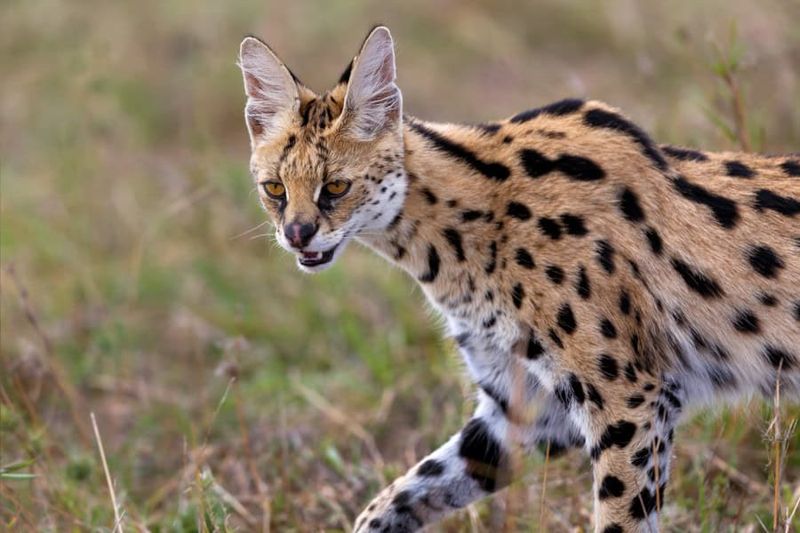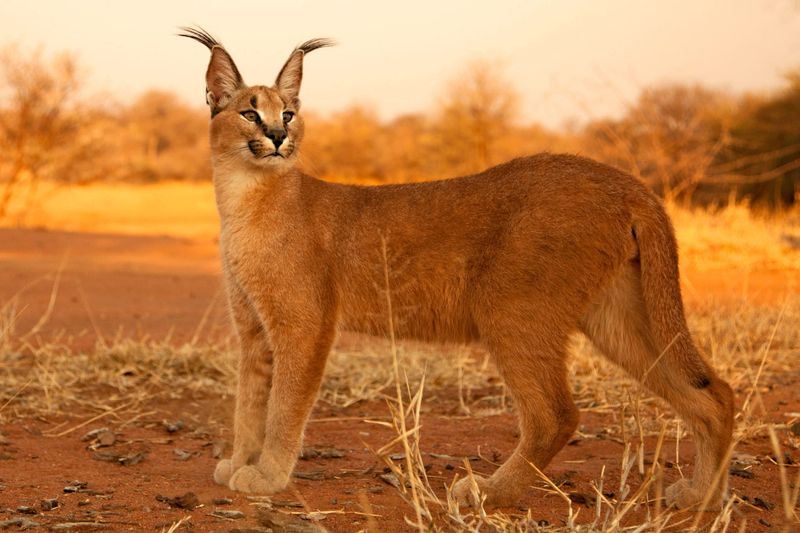📖 Table of Content:
Discover the world of enigmatic and elusive wild cats that are more challenging to find than the majestic tiger. These fascinating felines, dwelling in diverse habitats, captivate wildlife enthusiasts with their unique characteristics and mysterious lives. Join us as we unveil eleven of these rare and intriguing cats.
1. Bornean Bay Cat
A ghost in the rainforest, the Bornean Bay Cat is rarely seen and even less photographed. This elusive cat, with its striking reddish-brown coat, roams the dense jungles of Borneo. Despite extensive scientific efforts, much about its behavior and ecology remains a mystery. With fewer than 2,500 believed to exist, conservationists have flagged this species as endangered. Its preference for dense, undisturbed forests makes habitat destruction a significant threat. The Bornean Bay Cat’s enigmatic presence highlights the urgent need for conservation in its habitat. Its silent, shadowy existence continues to intrigue and baffle biologists.
2. Andean Mountain Cat
High in the cloud-kissed Andes, the Andean Mountain Cat prowls its rocky realm. This small, yet majestic predator is a master of mountain survival, with dense fur that shields it from the harsh climate. Less than 1,400 individuals remain, making it one of the rarest cats in the Americas. Its habitat, primarily above 3,000 meters, offers both refuge and isolation, complicating conservation efforts. The Andean Mountain Cat’s mysterious life at such altitudes stirs curiosity and concern alike. Its survival is closely tied to the preservation of the Andean ecosystem.
3. Flat-headed Cat
With eyes fixed on the water, the Flat-headed Cat is a true piscatorial predator. Found in the wetlands of Southeast Asia, this cat’s unique skull shape aids its aquatic hunting lifestyle. Sadly, its wetland home faces threats from agricultural expansion and pollution. Less adaptable than other felids, the Flat-headed Cat’s dwindling numbers are cause for concern. Conservation programs are crucial to ensure its survival, as its disappearance would signal the loss of wetland biodiversity. The Flat-headed Cat’s specialized nature makes it both fascinating and vulnerable in equal measure.
4. Iberian Lynx
In the Mediterranean woods of Spain, the Iberian Lynx stalks silently. Once on the brink of extinction, this spotted feline has made a remarkable comeback with dedicated conservation efforts. Its tufted ears and beard-like ruff give it an unmistakable appearance. Despite its recovery, threats like habitat fragmentation and reduced prey continue to loom. The Iberian Lynx symbolizes the delicate balance of predator and prey in its ecosystem. Its resurgence offers hope, yet also a reminder of the ongoing battle to sustain biodiversity amidst human encroachment.
5. Pampas Cat
Among the windswept grasses of the South American Pampas, the Pampas Cat blends seamlessly. Its tawny coat and dark stripes provide perfect camouflage against the backdrop of its grassy domain. This adaptable feline inhabits diverse environments, from grasslands to deserts. However, habitat alteration and hunting pose significant threats. The Pampas Cat’s elusive nature makes population assessments challenging, complicating conservation efforts. Its role in controlling rodent populations underlines its ecological importance. As a symbol of adaptability and resilience, the Pampas Cat thrives in the face of environmental pressures.
6. Fishing Cat
A stealthy angler, the Fishing Cat, is perfectly adapted to life near water. Found in South and Southeast Asia, this feline’s semi-aquatic lifestyle sets it apart. Webbed feet and a water-repelling coat make it a proficient hunter of fish and crustaceans. Unfortunately, wetland degradation threatens its existence. Conservationists strive to protect its habitat, recognizing the Fishing Cat’s role in maintaining ecological balance. Its ability to thrive in wetlands underscores the importance of preserving these critical ecosystems. The Fishing Cat’s unique adaptations reveal nature’s creativity in survival.
7. Jungle Cat
In the dense undergrowth of Indian jungles, the Jungle Cat prowls with stealth and agility. Its sandy coat offers perfect concealment among reeds and grass. Although it frequents wetlands and forests, it’s also a frequent visitor to agricultural lands, a testament to its adaptability. Human encroachment and habitat loss, however, pose ongoing challenges. Known for its distinctive long legs, the Jungle Cat is a skilled hunter, maintaining a delicate balance in its habitat. Its presence in diverse environments highlights the intricate web of life in which it plays a crucial part.
8. Sand Cat
A master of the desert, the Sand Cat survives where few others dare. Its thick fur insulates against the scorching heat and cold nights of the desert. Found in North Africa and Southwest Asia, this cat’s pale coat camouflages it perfectly against sandy dunes. The Sand Cat’s ability to thrive in such harsh conditions underscores its resilience. However, climate change and human activities threaten its fragile existence. Its nocturnal nature and elusive behavior make it a true ghost of the desert, inspiring awe and respect for its tenacity.
9. Pallas’s Cat
With its expressive face and thick fur, Pallas’s Cat navigates the frigid steppes of Central Asia. Its plush coat and squat build make it appear larger than it is, providing warmth against the biting cold. Preferring solitude, this cat is adept at hunting in the barren landscape. Despite its adaptations, human encroachment and hunting pose threats to its population. Known for its grumpy appearance, Pallas’s Cat holds a unique place in the cultural tapestry of the region. Its survival is closely linked to the conservation of the arid steppes.
10. Serval
Graceful and long-legged, the Serval scans the African savanna with large ears that detect the slightest sounds. Its striking golden coat, dotted with black spots, provides camouflage in tall grasses. This cat is an exceptional hunter, known for its high leaps to catch birds. While not endangered, habitat loss due to agriculture threatens its future. The Serval’s elegance and hunting prowess make it a remarkable resident of the savanna. Its success in various environments highlights the adaptability and resilience of wild cats. The Serval remains a symbol of grace in the wild.
11. Caracal
Renowned for its dramatic leaps, the Caracal is a master of the African and Asian arid landscapes. Its tufted ears and sleek, muscular build make it a formidable predator. Caracals hunt with precision, often capturing birds mid-flight. However, habitat loss and human conflict pose risks to their populations. Known as the “desert lynx,” the Caracal’s adaptability is showcased in its varied diet and habitats. Despite challenges, it continues to thrive across continents, symbolizing the untamed beauty and complexity of nature’s design. The Caracal’s elegance and agility are truly captivating.



